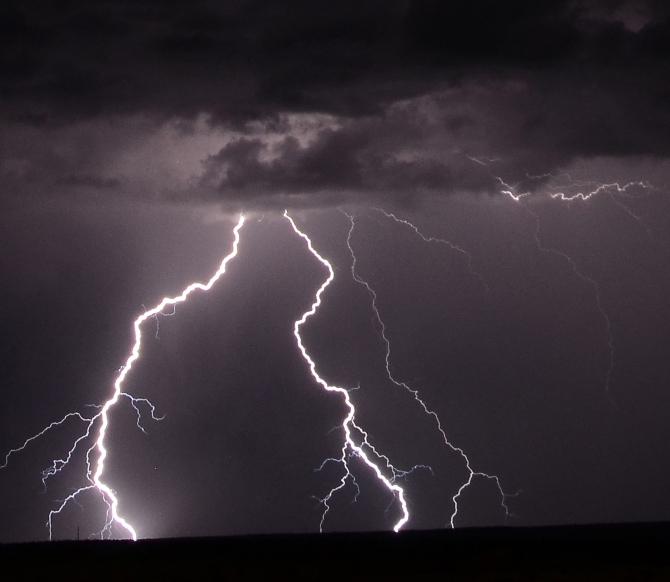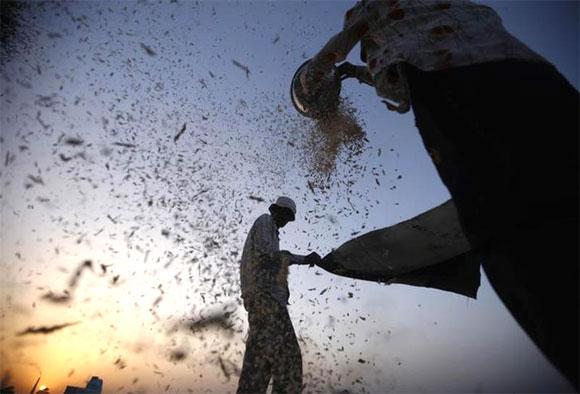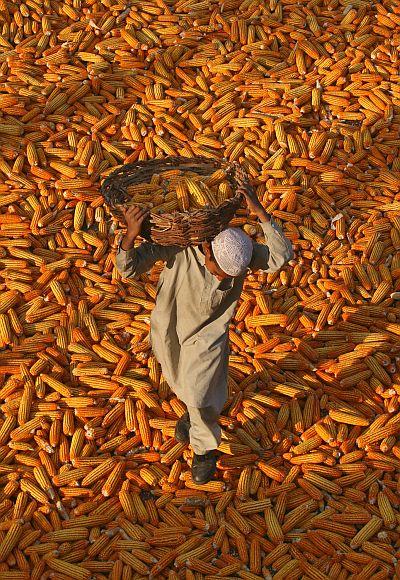 | « Back to article | Print this article |
Met expects monsoon to be sub-normal this year
India’s southwest monsoon could be below normal in 2014, with the El Nino weather phenomenon emerging, the India Meteorological Department said on Thursday in its first official forecast for the year.
The weather office predicted rainfall in the four-month monsoon period to be 95 per cent of the long-period average, a tad lower than the normal range of 96-104 per cent.
LPA is the average of rainfall in the years from 1951 to 2000 (that is, 89 cm) and the forecast is with a model error of plus/minus five per cent.
“The latest forecasts from a majority of the models indicate a warming trend in the sea-surface temperature over the equatorial Pacific, reaching to the El Nino level during the southwest monsoon season, with a probability of around 60 per cent,” IMD said in its forecast.
Click NEXT to read further. . .
Met expects monsoon to be sub-normal this year
The four-month southwest monsoon period starting June provides almost 70 per cent of the total moisture the country receives annually.
In the past decade, the El Nino phenomenon, which does not allow rain-bearing clouds to form, has caused drought in India in 2002, 2004 and 2009.
The rain is not only crucial for growth of kharif crops, planted during the season, but provides necessary moisture to the soil for the following rabi season.
Southwest monsoon is significant for farm production, as only 45 per cent of India’s sown land is irrigated.
Despite a fall in agriculture’s share in the country’s overall gross domestic product, monsoon remains key for the rural economy, as almost 60 per cent of India’s population lives in villages.
Click NEXT to read further. . .
Met expects monsoon to be sub-normal this year
IMD said the chance of monsoon being normal was 35 per cent, while the possibility of it being below normal was 33 per cent.
There was a 23 per chance of a drought, the weather department said.
So, the possibility of sub-normal rainfall -- 56 per cent -- is much higher than the chance of normal rainfall.
Below-normal rain could add to the pressure on prices of food commodities, particularly oilseeds, pulses and vegetables, as cereals are mainly grown in the areas that have good irrigation facilities.
Even as the overall rate of price rise in March was only 5.70 per cent, the Wholesale Price Index-based food inflation rate stood at about 10 per cent.
Click NEXT to read further. . .
Met expects monsoon to be sub-normal this year
The Consumer Price Index-based food inflation rate, too, was above nine per cent, while the total rate of price rise in the month was 8.31 per cent.
“I would say distribution of rainfall is quite important in this case.
“If the deficit in rains is combined with poor distribution, it could have a negative impact on agricultural output,” said Ramesh Chand, director of the National Centre for Agriculture Economics and Policy Research.
“If the rainfall is distributed evenly, this deficit will not matter much.”
“If El Nino causes less rainfall and patchy distribution, it will be a matter for concern and we should be prepared for that,” Chand added.
Click NEXT to read further. . .
Met expects monsoon to be sub-normal this year
CARE Ratings Chief Economist Madan Sabnavis said a slightly below-normal monsoon in 2014 was definitely negative for the overall agriculture sector, as well as the Indian economy.
“This will also mean government might have to increase the minimum support price for cereals to compensate for the production loss. That will put pressure on prices.”
The impact on specific crops would be known at a later stage, Sabnavis said.
The weather office said it would give a region-wise prediction of rainfall when it would update its forecast in June and then in July.
Click NEXT to read further. . .
Met expects monsoon to be sub-normal this year
“Usually, prices of pulses and oilseeds see the highest impact of low rains, rather than rice and wheat.
“For the economy, any shortfall in rains impacts the spending power of rural households,” said Sabnavis.
Earlier this month, private weather forecaster Skymet had said Northwest India (which includes regions like Gujarat, Saurashtra, Kutch, Punjab, Rajasthan and Haryana) and Westcentral India (East Madhya Pradesh, Chhattisgarh, Vidharbha, Marathwada, Madhya Maharashtra, Konkan and Goa, North Interior Karnataka and Telengana) could experience weak monsoon conditions this year.
In February, the Union agriculture ministry had directed all states to make contingency plans to deal with any situation arising out of insufficient rains in 2014.
Click NEXT to read further. . .







